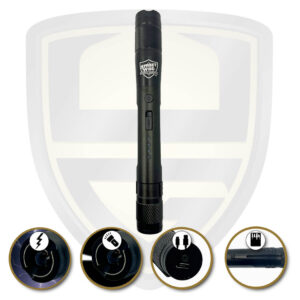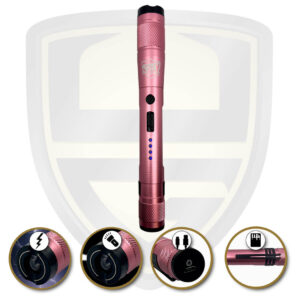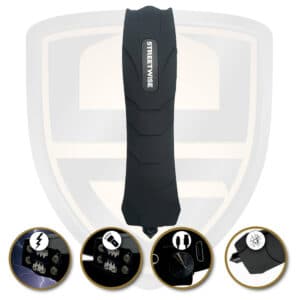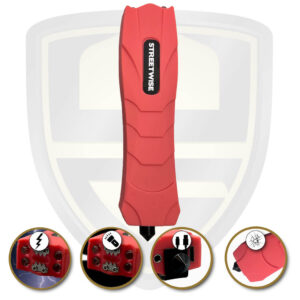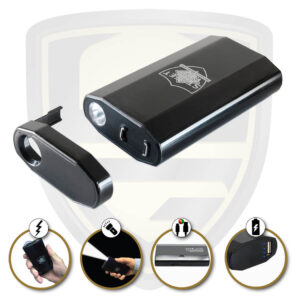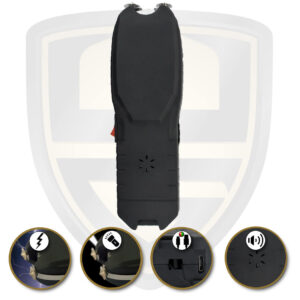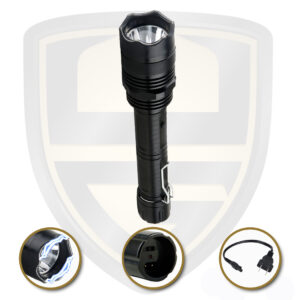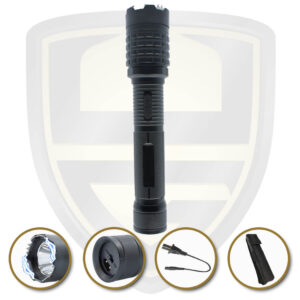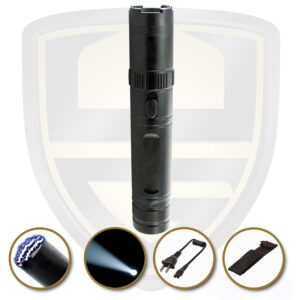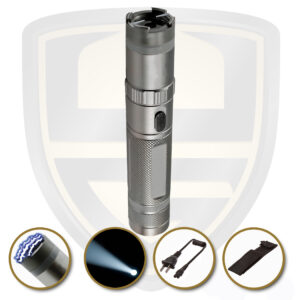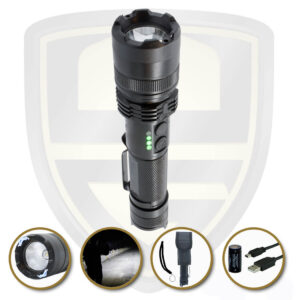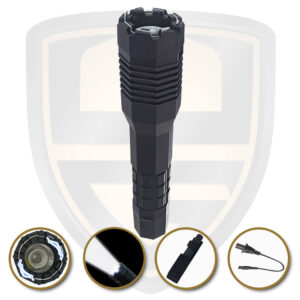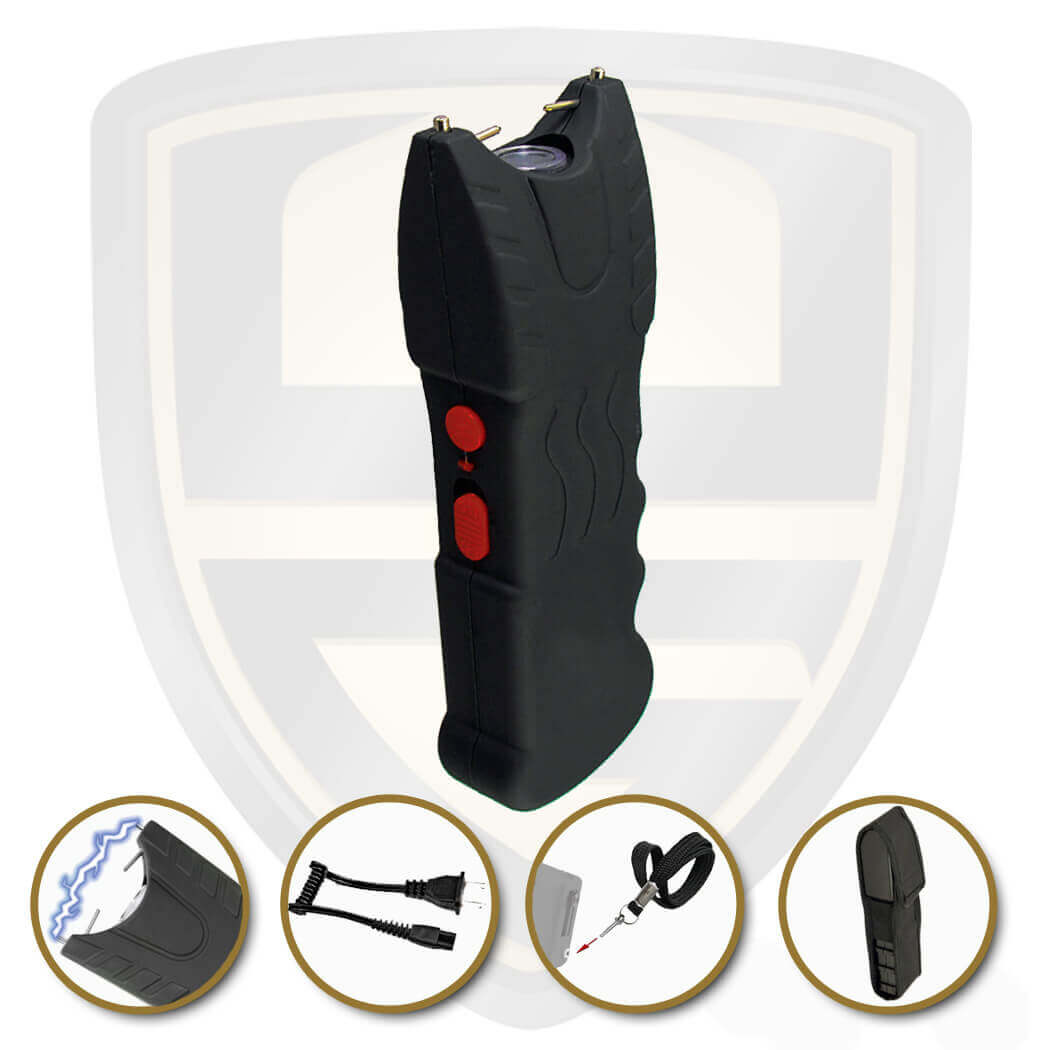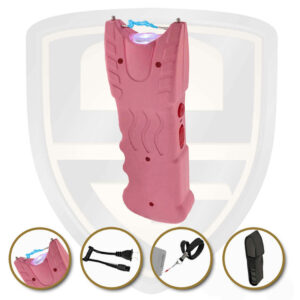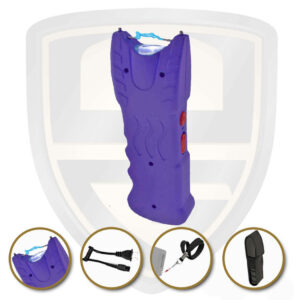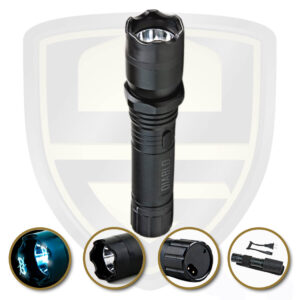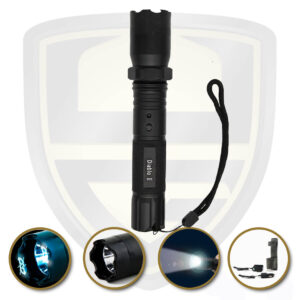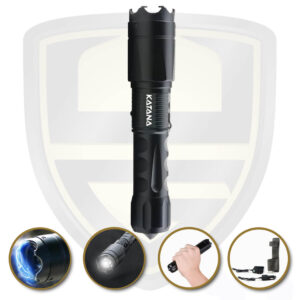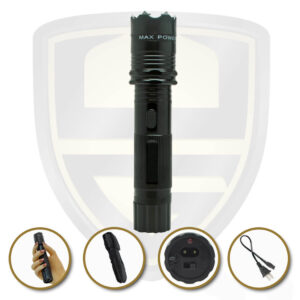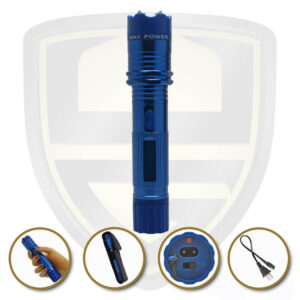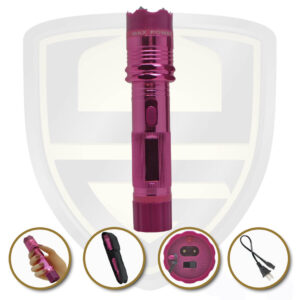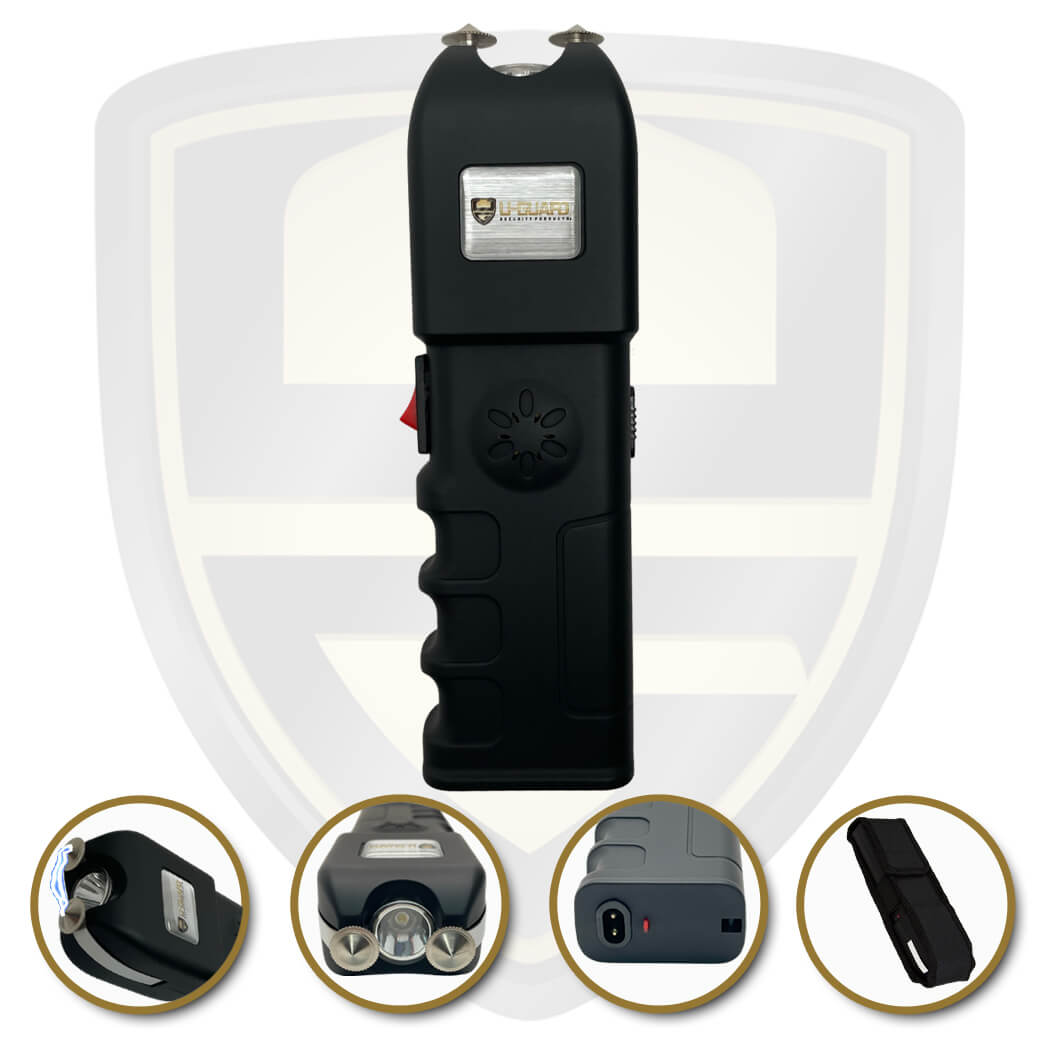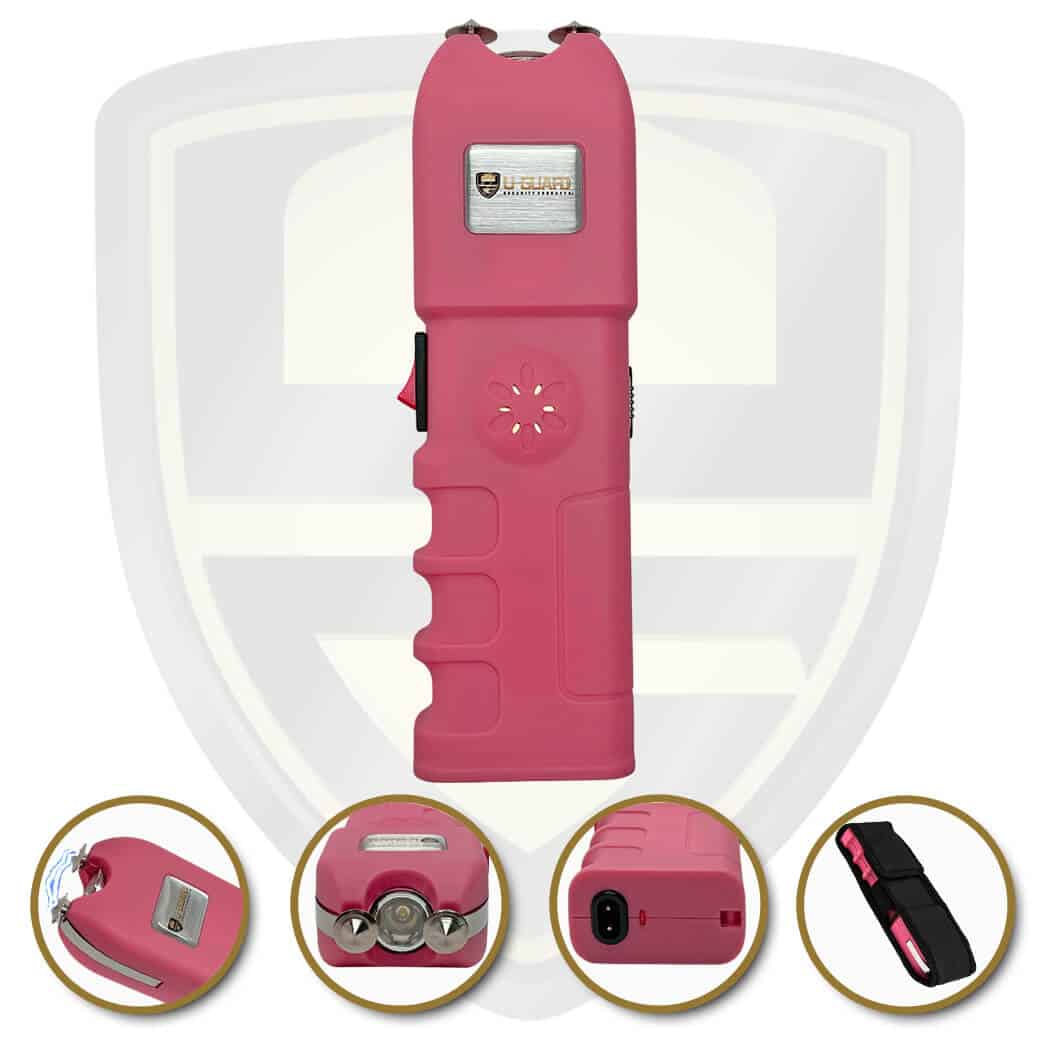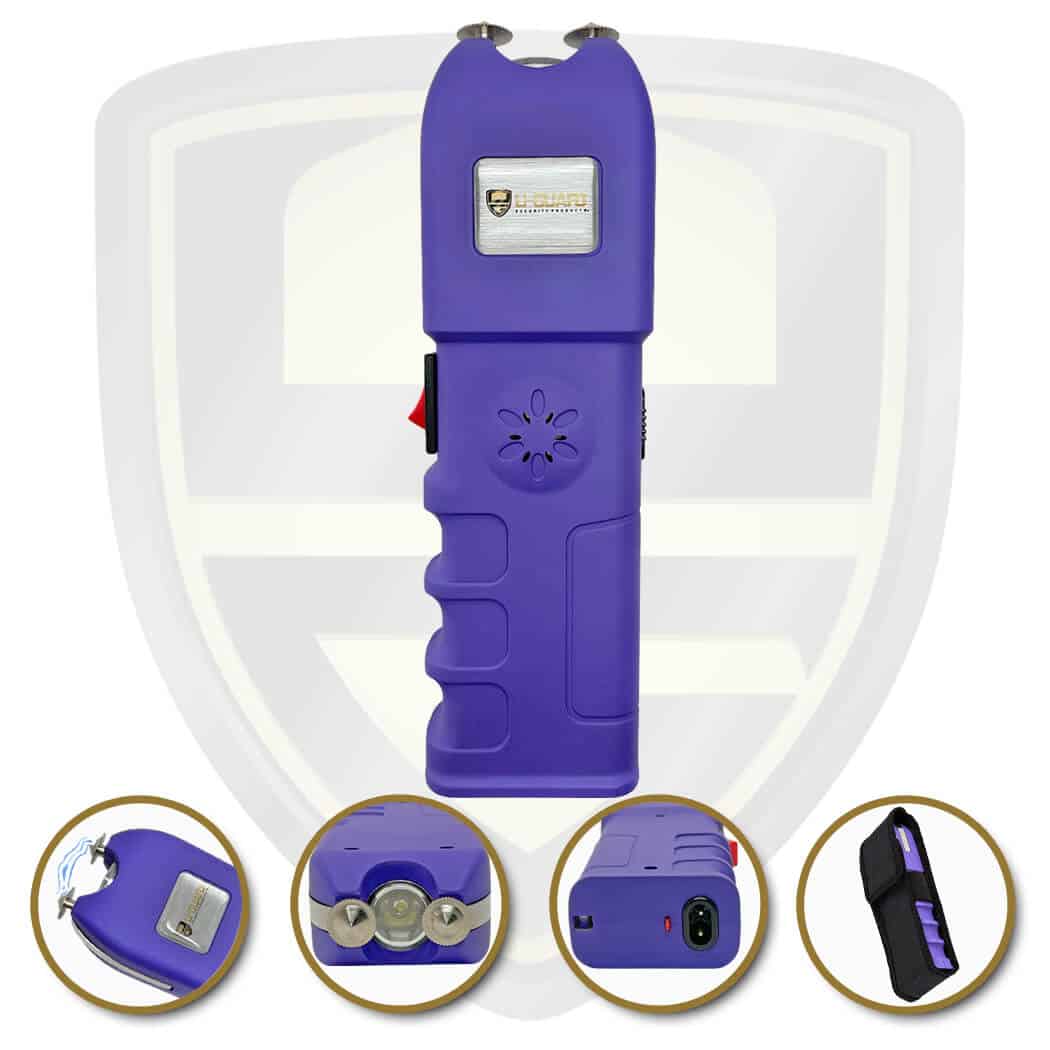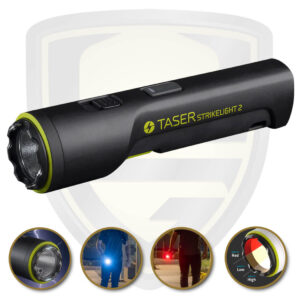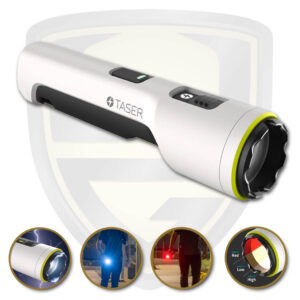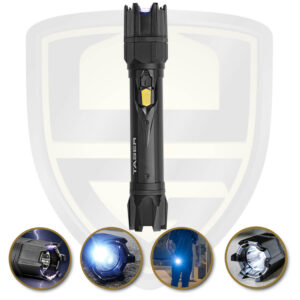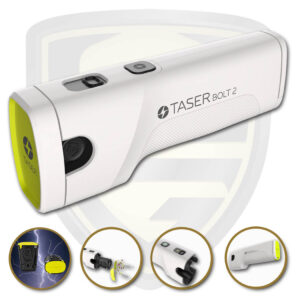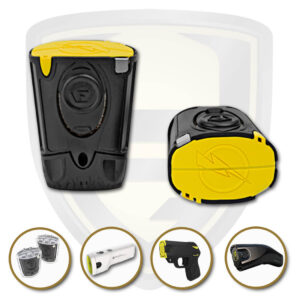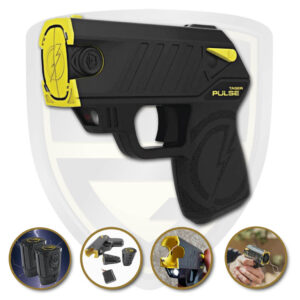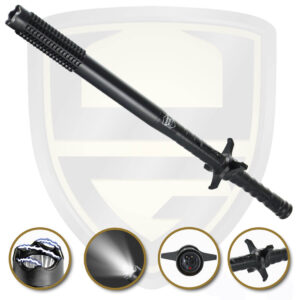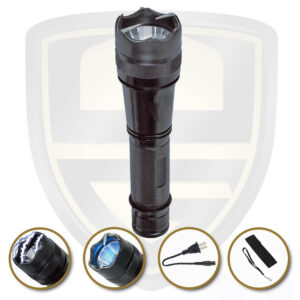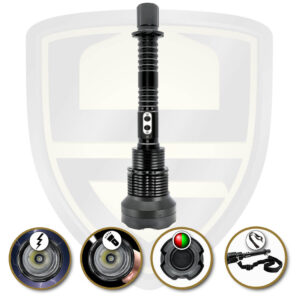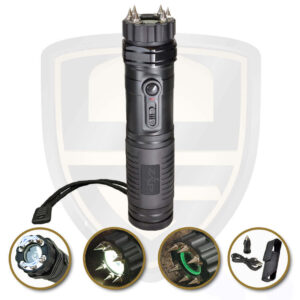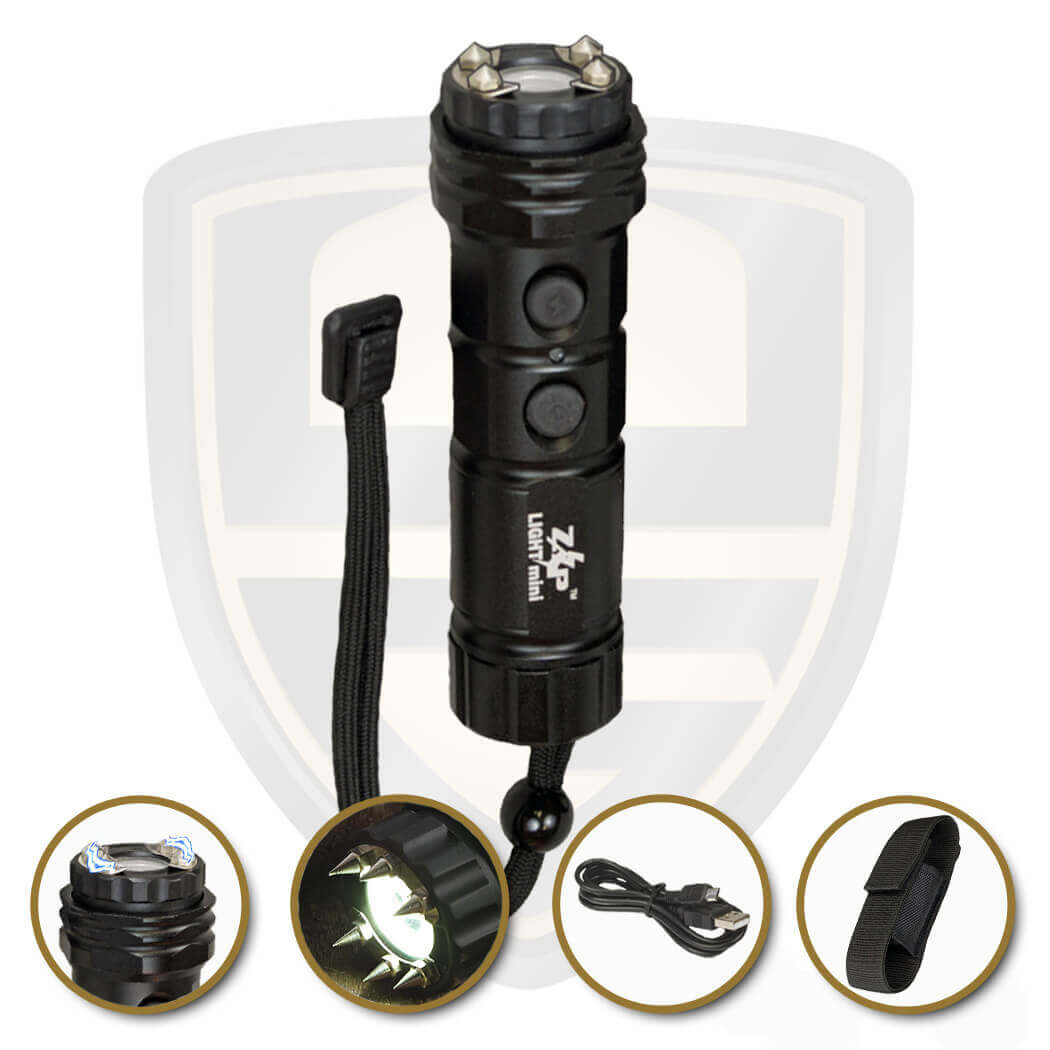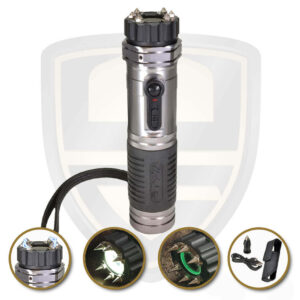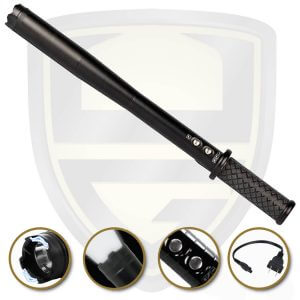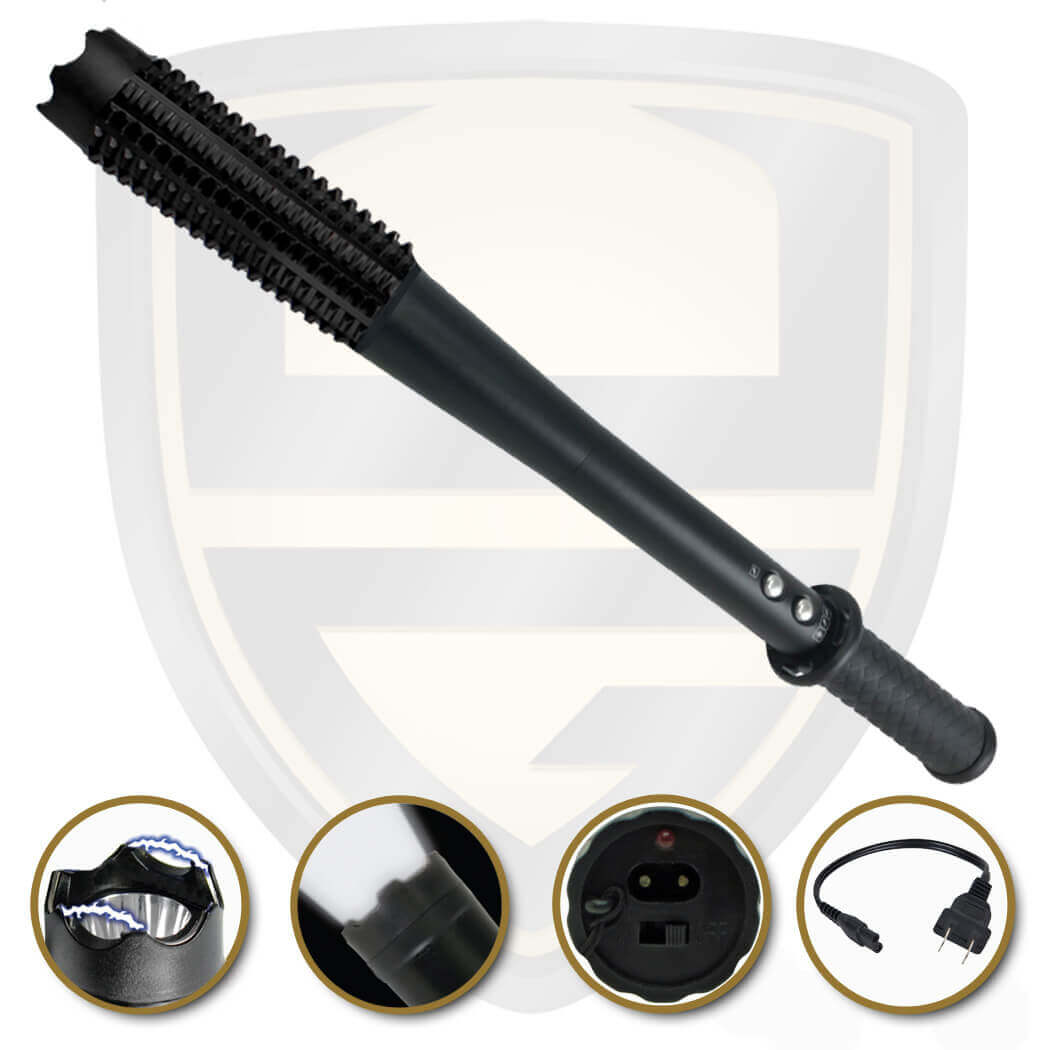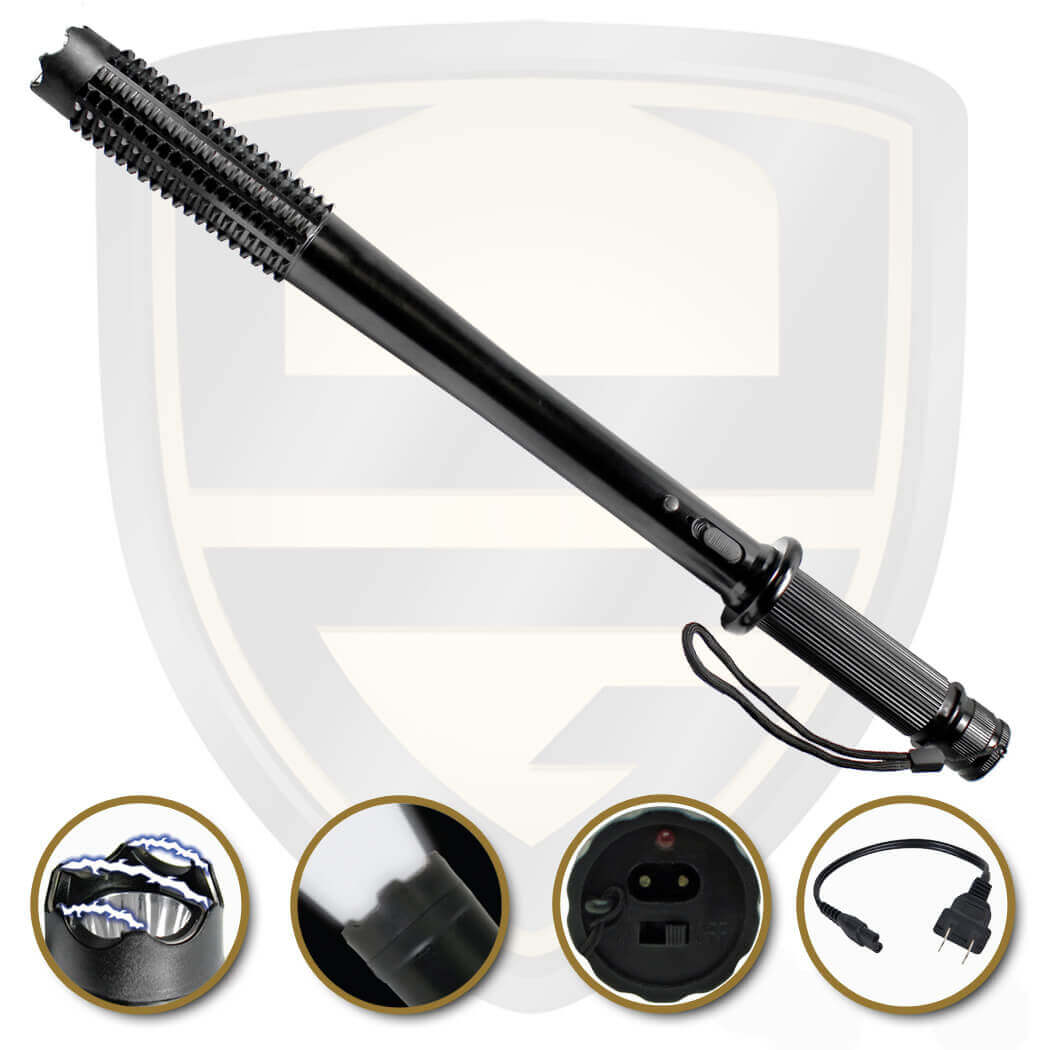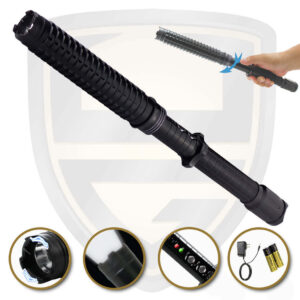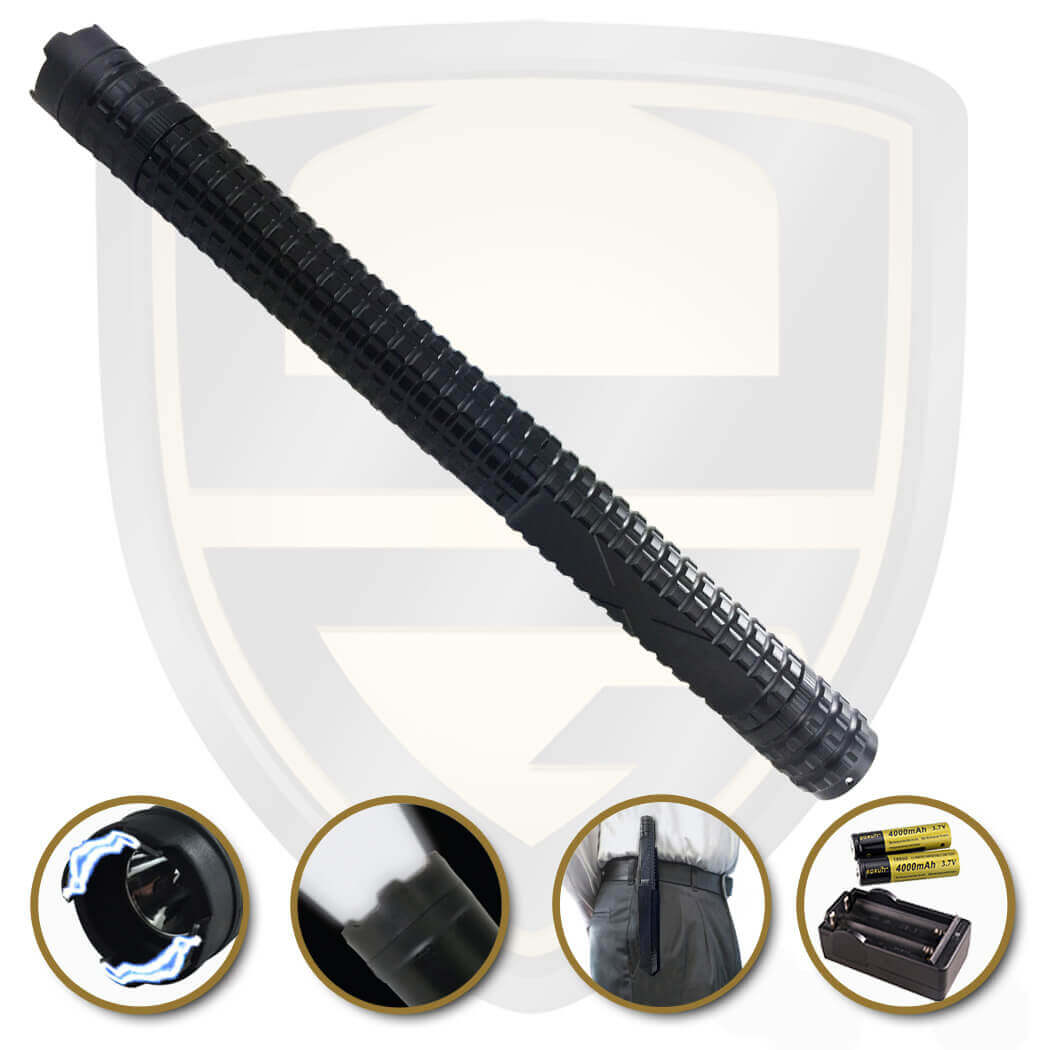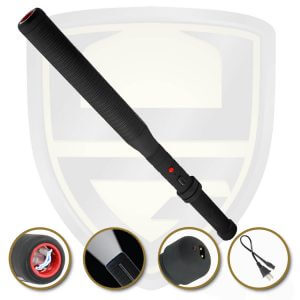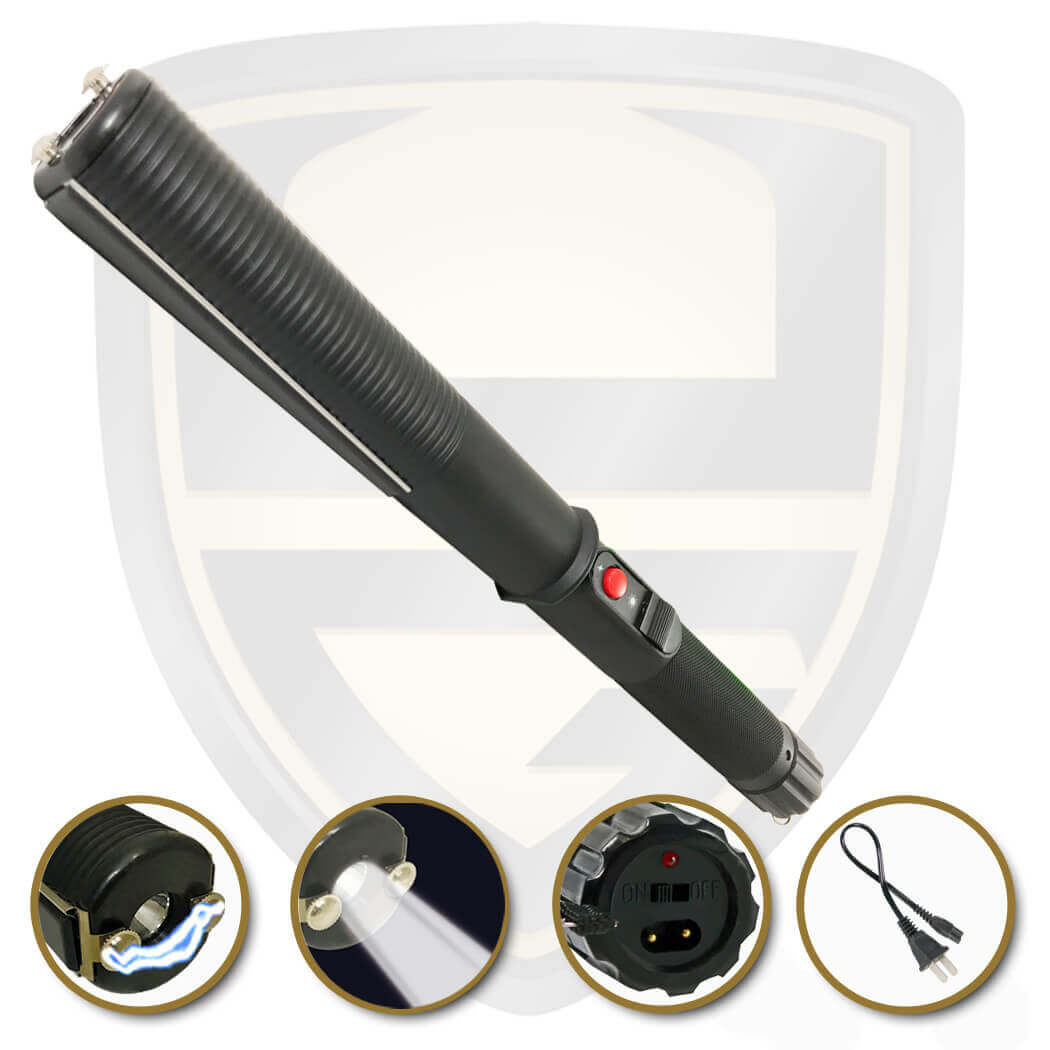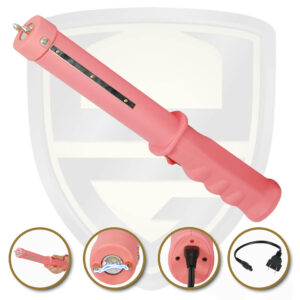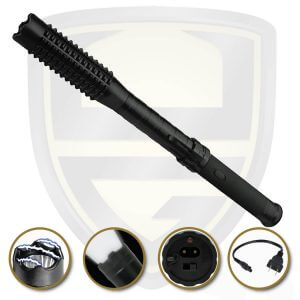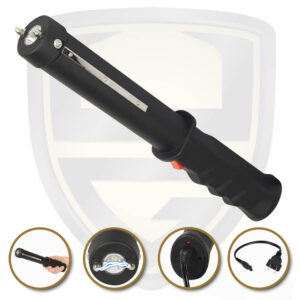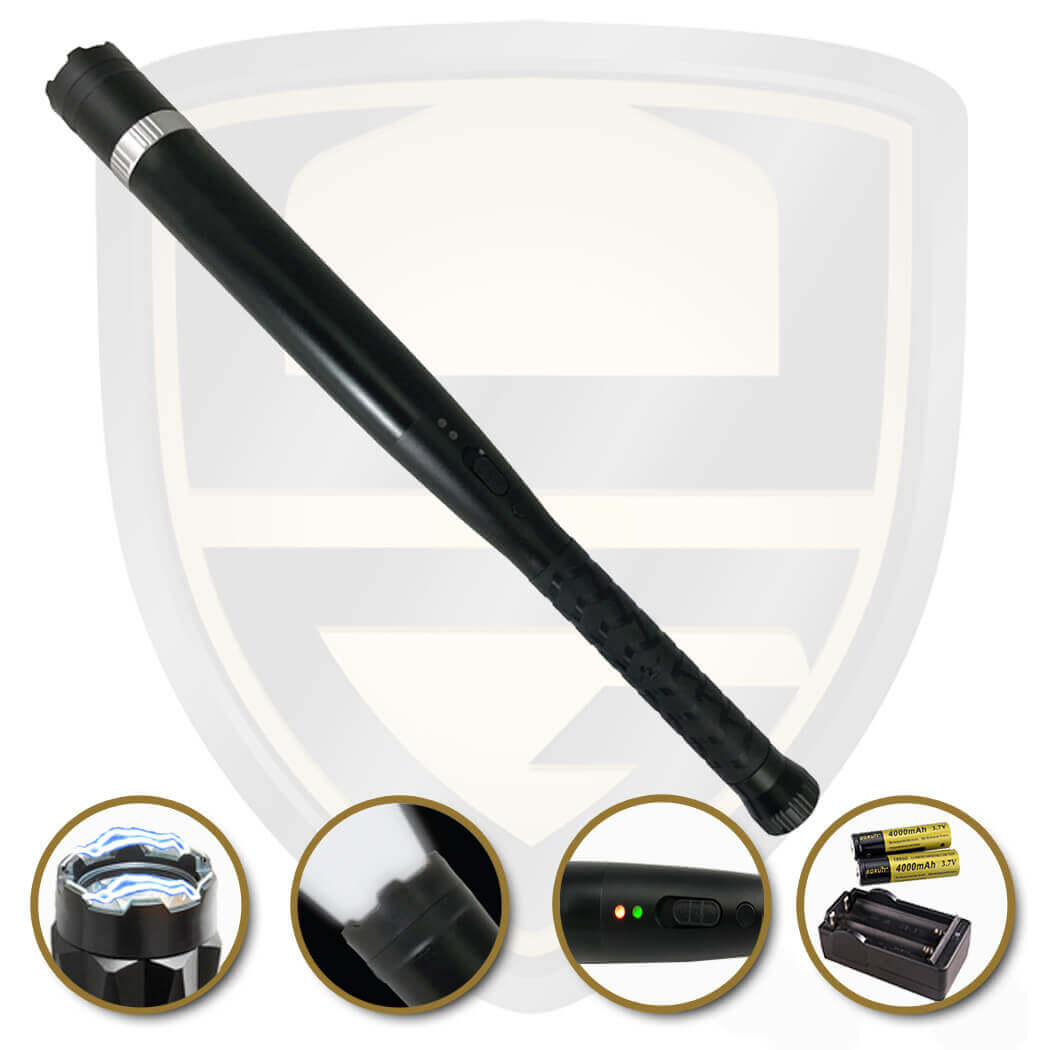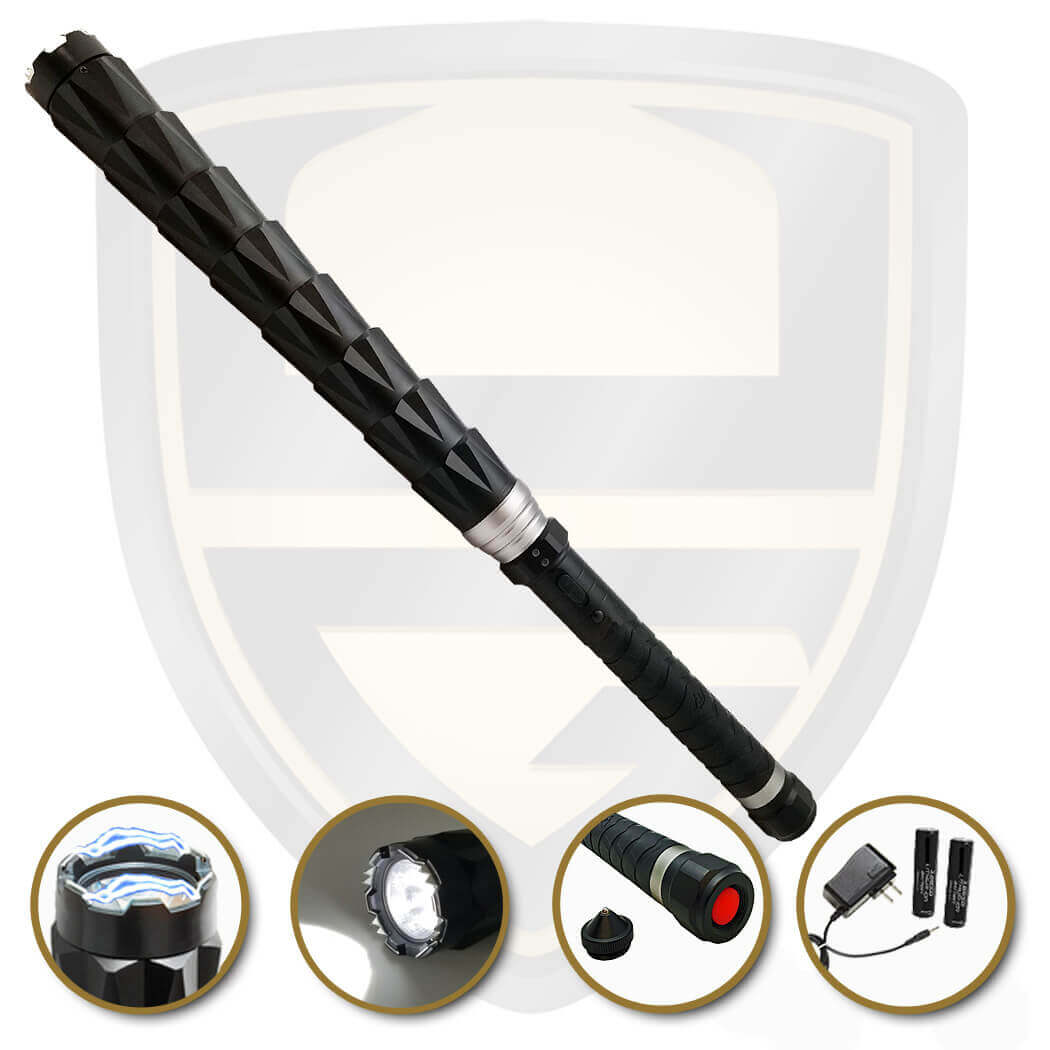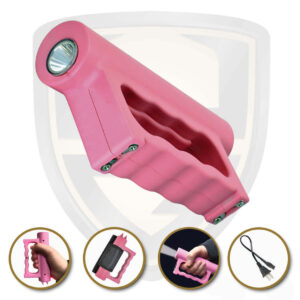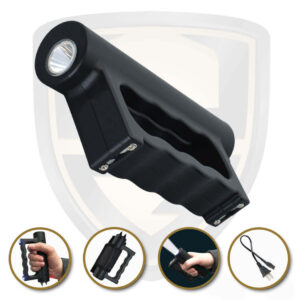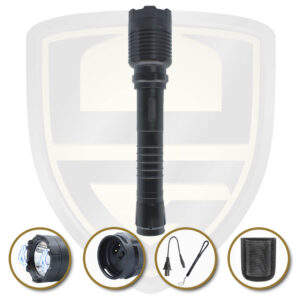Police Stun Guns
What Stun Guns Do Police Use?
Police stun guns are crucial in maintaining public safety when equipping law enforcement with non-lethal tools. Police departments rely on various stun gun models to subdue suspects without causing permanent harm. One common type used by police is the direct contact stun gun, which requires physical contact with the suspect. These devices deliver a powerful electric shock that temporarily incapacitates the individual, allowing officers to make an arrest safely. Police stun gun flashlights and police stun batons are carried and used often by military police and security guards.
In years past direct contact hand-held police stun guns were the primary less lethal option for law enforcement due to availability and affordability. In modern times Police Taser Guns Like the X26 models are used. A police taser gun by the Taser® Brand shoots stun darts up to 30’ from a removable disposable stun dart cartridge. In addition to direct contact stun guns, larger big budget law enforcement agencies use police taser guns exclusively. Unlike direct contact stun guns, police taser guns are deployed from a distance and equipped with electrodes that shoot out toward the target. The police Taser® (stun guns that shoot) deliver an electric shock through wired connections, rendering the suspect immobilized for a short period. Conducted Electrical Weapons. (CEWs) stun devices are particularly effective when dealing with individuals who pose a threat at a distance or in situations where physical confrontation could escalate. The difference between a police stun gun and a police taser gun that shoots a stun dart can be several hundred dollars per police taser gun. Many police officer will carry a police stun gun that is also a flashlight along with a police taser gun manufactured by the Taser® or Phazzer® Brands on their duty belt.
How Do Police Stun Guns Work vs. Police Taser® Guns?
Police stun guns and Taser® guns are both non-lethal weapons law enforcement agencies use to immobilize potential threats without causing fatal harm. While they serve a similar purpose, their price and mechanisms differ significantly in functionality and effectiveness. It is important to note that the term stun gun is commonly interchangeable with the terms; taser, tazer, or tazor. The Brand Taser® is owned and manufactured by Axon. The Taser® brand manufactures both taser guns for police and civilians along with direct contact police stun gun flashlights.
A police stun gun delivers an electric shock upon contact with the target, primarily causing pain and muscle contractions. Its main objective is to incapacitate the individual temporarily by overwhelming their sensory with pain and muscle numbness. On the other hand, a Conducted Electrical Weapons (CEWs) police Taser® gun shoots two small stun darts that attach to the target’s clothing or skin. This weapon utilizes Electro-Muscular Disruption (EMD) technology to override normal muscle control by emitting electrical pulses that interfere with the central nervous system’s communication pathways.
Taser® guns that shoot stun darts have revolutionized how law enforcement agencies worldwide approach immobilizing suspects. While conventional police stun guns merely induce pain by delivering an electric shock, a police Taser® gun goes further, effectively incapacitating individuals through its unique technology. Traditional police stun guns rely on direct contact to immobilize targets. Police Taser® guns can be deployed from a distance, ensuring officer safety and reducing the risk of physical altercations. The key to the Taser® gun’s effectiveness is its ability to override the body’s muscular system. When fired, it releases two small probes up to 30 feet attached to thin wires that transmit electrical pulses into the target’s body. These pulses cause involuntary muscle contractions and temporarily disrupt the nervous system, rendering individuals unable to move or resist arrest.
Can You Buy A Police Stun Gun?
The answer is yes. Direct contact stun guns initially designed for police use can now be legally owned and used by civilians for self-defense. These devices, commonly known as police stun guns, or police tasers have gained popularity in recent years due to their effectiveness in providing personal protection and safety. Police stun gun flashlights, and police batons are popular for personal security, safety, and self-defense at home, work, and daily carry to stay prepared.
These non-lethal stun devices have gained popularity due to their effectiveness in immobilizing potential threats without causing permanent harm or injury. Along with affordability as a less lethal weapon option for self-defense. Obtaining a police stun gun allows individuals to control their safety and defense. With crime on the rise in many areas, it’s essential to have adequate means of protection readily available. Stun guns offer an ideal solution as they incapacitate attackers temporarily by delivering an electric shock upon direct contact. This allows potential victims valuable time to escape and seek help from authorities while minimizing the risk of long-term damage or fatalities. The advantage of owning such a device lies in its portability and ease of use, making it accessible to people from all walks of life who wish to enhance their security. When considering purchasing a police stun gun for self-defense, it is important to familiarize oneself with local laws and regulations surrounding their ownership and usage.
What Is A Police Stun Gun Voltage?
A police stun gun voltage refers to the electrical potential difference between two points within the device. This voltage allows the stun gun to deliver an incapacitating electric shock to its target. The voltage in a police stun gun is typically relatively high, often ranging from 50,000 volts to over 1 million volts. This high voltage is necessary to overcome the body’s natural resistance and penetrate through clothing. Creating such high voltages in a police stun gun involves using a step-up transformer circuit. This circuit takes electricity from a low-voltage source, such as a battery, and converts it into much higher voltages suitable for delivering an effective shock. The transformer works by utilizing electromagnetic induction principles, where alternating current (AC) flows through coils of wire and induces a higher voltage across another set of coils.
When examining police stun guns, it is essential to look into the intricate details of voltage, particularly in relation to milliamps and microcoulombs. The effectiveness of a stun gun lies not only in its voltage output but also in how that charge is delivered. To comprehend this technical aspect, we must first grasp the concept of electrical current. Current is measured in amperes (A), with 1 ampere equaling 1,000 milliamps (mA). This unit represents the flow rate of electric charge and plays a vital role in determining the impact of a stun gun on its target.
While voltage grabs headlines when discussing stun guns, the amperage or current directly affects an individual’s physiological response. Another aspect that dictates the effectiveness and safety of stun guns is their voltage output, measured in microcoulombs (µC). Microcoulombs refer to the quantity of electrical charge delivered in one-millionth of a coulomb, and this unit plays a critical role in determining how much electric current will flow through an individual when struck by a stun gun. Regarding police stun gun voltage, it is important to understand that higher voltage does not necessarily equate to greater danger or efficacy. Exaggerated voltage claims are commonly used by cheap stun guns sold on eBay and Amazon in the listing headlines and descriptions as a marketing tool to differentiate between brands’ and models’ power or size. Most of the voltage claims are inaccurate and un validated with little to no published proof of the extremely high voltage claims a stun gun manufacturer or a seller makes on a stun gun. Do not be fooled by voltage claims. There is more to a stun device than voltage.
Are Police Stun Guns Legal?
Is it yes for most of the United States. While stun guns are legal in many states, counties, cities, and towns. Stun guns and tasers are regulated with minor restrictions for civilian use to be owned and carried for personal protection and self-defense by a few states, counties, and cities. Below is a summary of the stun gun laws in the USA by each state. For more details, reference U-Guard Security Products stun gun laws by state and taser gun laws by state pages.
- Stun Gun Self-Defense Use & Restrictions: Stun gun ownership and sales are prohibited in the state of Rhode Island.
- A stun device weapon can be used for protection and self-defense. It can be owned, carried, and used lawfully for adults to use to defend themselves with some restrictions in the following states. The following states allow civilians to have an electronic stun device with some restriction, proper training, and a valid concealed carry permit /certificate issued by the state is required. The states that require a safety carry permit for rechargeable tasers and stun guns are Connecticut, Delaware, Illinois, New Mexico, West Virginia, and Wisconsin. Note: Stun gun and taser laws change, so please check with your state, city, and county of residence for the most current stun gun and taser regulations before purchasing or using a stun device. The balance of the USA states allows civilians to own and operate a stun gun or tazer legally for personal protection and self-defense.


